Europe
Asia Pacific
North America
South America
Middle East
South Africa
Summary of the ocean freight market update in June
“We estimate that a return to normal routings through the Red Sea and Suez Canal would lower ship demand by 10%. In our base case, we expect weakening of the supply/demand balance during the second half of 2025 and expect freight rates to retreat accordingly. In 2026, we anticipate a further, albeit less pronounced, weakening of freight rates and the supply/demand balance”. (Bimco 2025 outlook)
Northern Europe’s container ports are still experiencing significant congestion, with carriers adjusting services to avoid the worst-affected locations. Rotterdam, Antwerp and Hamburg continue to experience delays, leading shipping lines including Maersk, CMA CGM and MSC to either revise schedules, extend transit times and reroute services. But shippers can expect delays until the end of the peak season at the very earliest. Maersk announced that “due to the current operational constraints” its transatlantic TA5 service would no longer call in Rotterdam from June 25 onwards, sailing instead straight from Felixstowe to Hamburg. (Lloyds)
The European Union is considering lowering tariffs on a range of U.S. imports in a bid to clinch a speedy trade deal with President Trump, according to people familiar with the matter. EU leaders debated how much they are willing to sacrifice to win over Trump at a meeting in Brussels on Thursday evening. Other concessions under consideration include lowering nontariff barriers, buying more American products including liquefied natural gas, and offering to cooperate with the U.S. to tackle its economic concerns about China. (WSJ)
Drewry’s container forecaster expects the supply-demand balance to weaken again in the second half of the year, which will cause spot rates to decline. The volatility and timing of rate changes will depend on the outcome of legal challenges to U.S. President Donald Trump’s tariffs and on capacity changes related to the introduction of the U.S. penalties on Chinese ships, which are uncertain. (Drewry)
Ocean freight trends - Global Market
- Early Peak Season from Tariff Pause: A 90-day suspension of additional US tariffs on Chinese goods has driven a heavy front-loading of cargo into North America. The result: a compressed and early peak season, especially on Transpacific lanes, with booking surges from late May into June.
- Rapid Capacity Reallocation: Carriers reinstated suspended Transpacific services and added extra loaders, leading to a 28% increase in capacity within weeks. This move has drawn equipment and vessel space from other trade lanes, tightening space in Asia–Europe and intra-Asia services.
- Red Sea Crisis Continues: Vessel traffic through the Suez remains minimal. Most carriers are still routing via the Cape of Good Hope, extending transit times by up to three weeks and affecting schedule reliability across Asia–Europe and Indian Subcontinent trades.
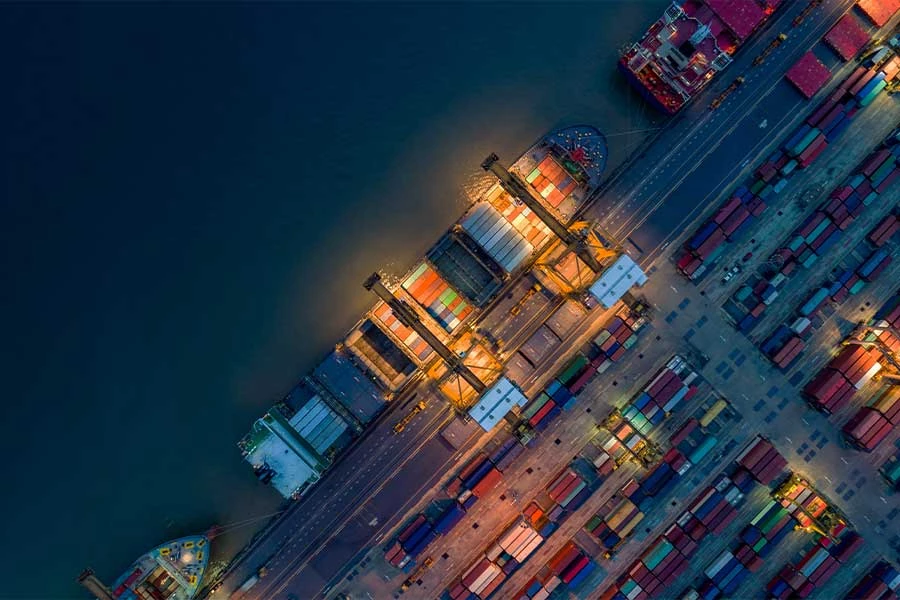
- Middle East Tensions Escalate: Heightened conflict between Iran and Israel is increasing risk around the Strait of Hormuz, impacting regional trade and insurance premiums. Routes to/from the Arabian Gulf are seeing cost and routing implications.
- Sustainability Efforts Press Ahead: Despite disruption, investment in LNG, ammonia and biofuels continues. The EU’s FuelEU Maritime regulation is shaping bunker procurement strategies for 2025 and beyond.
Main Reasons for Bottlenecks
Major global ports are experiencing critical congestion:
- Singapore: Vessel bunching, 4–6 day delays, 85% yard occupancy.
- Ningbo-Zhoushan: Delays of up to 10 days from peak export volumes.
- US Ports: Los Angeles, NY/NJ, and Charleston all reporting 2–4 day waiting times.
- Canada (Montreal): Rail dwell times exceed 12 days.
Equipment Imbalances Emerging: Rapid container flows into the US are straining the ability to reposition empties. Inland US locations and key Asian hubs (Vietnam, South China) will likely face container shortages by July.
Labor-Driven Disruption in Europe: Strikes in Northern Europe and unresolved port labor issues in Rotterdam and Hamburg are already impacting inland rail and terminal productivity.
Impact on Freight Rates
- Transpacific Volatility: Spot rates jumped sharply in early June driven by GRIs and PSS. By mid-June, rates began correcting as capacity returned and levels are closer to may rates for west coast but still far higher for Gulf and east coast.
- Middle East Routes Spiking: Shanghai–Jebel Ali rates rose 55% MoM, reflecting both capacity shifts and geopolitical risk premiums.
Outlook
Sustained Pressure Through July: Bookings remain strong as shippers rush to beat the tariff deadline. Congestion and equipment shortages will continue to strain operations in Q3.
Second-Half Correction Likely: As inventories fill and demand slows post-tariff window, rates may soften sharply from August. Redeployed capacity and stabilized volumes will likely push spot rates down across most trades.
Key Uncertainties to Watch:
- US tariff policy developments
- Port congestion clearance speed
- Further instability in the Middle East
Energy Price - June 2025
20 May 2025 = USD 65.38
20 June 2025 = USD 74.93
OPEC+ is set to announce another big increase of 411,000 barrels per day in production for August as it looks to regain market share, four delegates from the group told Reuters.
If the increase is agreed, it would bring the total rise in supply from OPEC+ to 1.78 million bpd so far this year, equivalent to over 1.5% of total global demand. (Reuters)
Analysis shows release of greenhouse gases from liquefied natural gas supply chain could be cut by more than 60% using today’s technologies. Drawing on the latest data, an IEA report provides a comprehensive new estimate of greenhouse gas emissions from across the global liquefied natural gas (LNG) supply chain and identifies key opportunities to bring them down. (IEA)
The U.S. Energy Information Administration (EIA) expects recent developments in global trade policy and oil production to contribute to lower global demand for petroleum products through 2026, contributing to lower oil prices than it previously forecast. In its May Short-Term Energy Outlook (STEO), EIA also forecasts natural gas prices to increase from historic lows in 2024. (USEIA)
The UK has launched a Marine Energy Taskforce (MET), a 12-month initiative that will explore the actions required to realize the UK’s marine energy potential. According to the Marine Energy Council, the UK has over 25GW and 11GW of accessible wave and tidal stream energy capacity respectively. The MET group will focus on site development, financing, innovation, and supply chain growth to ensure this capacity can be unlocked, while maximizing UK content within the projects. (Renewable Energy)
The risk of crude oil supply disruption in the Middle East has dropped to just 4%, according to options traders, Goldman Sachs said in a new note, after Israel and Iran agreed to a ceasefire earlier in the week. The bank’s analysts reported that options traders now see a 60% chance for Brent crude to average between USD 60 and USD 70 over the next three months, with the chance of the benchmark topping USD 70 per barrel at 28%. (OILPRICE.COM)
Abandoned coal mines or those closing down by the end of this decade have the potential to expand global solar capacity by 15%. In a new report, Global Energy Monitor (GEM) said data from its Global Coal Mine Tracker showed that 312 surface coal mines have been idled and degraded since 2020. These have a land area of over 2,089 square kilometres (km²), nearly the size of Luxembourg. Repurposing these to solar sites could help generate 103 gigawatts (GW) of power capacity on derelict lands. (Asian-Power)
Ocean freight trends - Europe
- Severe Import Congestion: Northern Europe is experiencing its most intense port congestion since the COVID-19 pandemic. Rotterdam, Antwerp, Hamburg, and Bremerhaven are under pressure due to a combination of labor strikes, reduced rail capacity, and full container yards.
- Carrier Service Adjustments: Major lines are omitting calls at heavily congested ports. For instance, Maersk dropped Rotterdam from its TA5 service to maintain schedule integrity.
- Knock-on Effects from Transpacific Focus: Capacity has been redirected toward the more lucrative Transpacific trade, leaving space shortages for Asia–Europe imports. This is directly driving up rates and transit uncertainty for European importers.
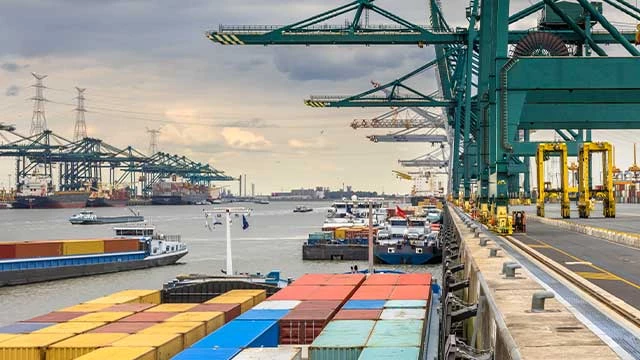
- Longer Routing Now Standard: Red Sea avoidance continues to force most services around the Cape of Good Hope, adding up to 3 weeks to transits from Asia and undermining schedule reliability.
Main Reasons for Bottlenecks
- Terminal Congestion in Key Ports: Terminal yard densities remain critically high across the North Range. Rail bottlenecks and Rhine river constraints (low water) are compounding inland congestion.
- Limited Empty Container Repositioning: The inability to quickly clear import containers is delaying the turnaround of empties for exports. This is not yet a Europe-wide shortage but may lead to tightness in specific regions or for certain equipment types.
- New Silk Road Disruptions: Rail-based alternatives for Asia–Europe cargo via Kazakhstan are delayed due to infrastructure works and congestion, limiting multimodal flexibility.
Impact on Freight Rates
- Asia–Europe Climb Continues: Rates rose as capacity shifted to the Pacific. Mediterranean and North Europe lanes saw steeper gains of about +45% MoM.
- Transatlantic slightly increase and Tight: Rates are slightly increased due to steady demand, but space is limited and roll risks are increasing.
Outlook
- Prolonged Congestion Likely: Northern European ports are not expected to normalize before August. Inland congestion and labor actions remain key constraints. Schedule disruptions will persist into Q3.
- Rate Pressures to Continue: Elevated spot rates for Asia–Europe trades will remain into July. Customers should anticipate short-term increases and delays in securing space.
- Export Planning Complexity Growing: While outbound demand is stable, the challenge lies in securing equipment and avoiding rolled cargo. Early booking and routing flexibility will be essential through the summer.
Ocean freight trends - Asia Pacific
- The Asian shipping markets remain structurally resilient but under great pressure due to the world events.
- Rates are expected to stay elevated, driven by port congestion, security risks, and shifting trade policies.
- The red sea crisis and Hormuz tensions remain fluid with any adverse impacts due to future escalation.
Main Reasons for Bottlenecks
- Port Congestion: Major ports such as Shanghai, Ningbo, Qingdao, Singapore, Port Klang, Manila, and Ho Chi Minh are reporting backlogs (around 1 – 3 days), equipment shortages and schedule delays.
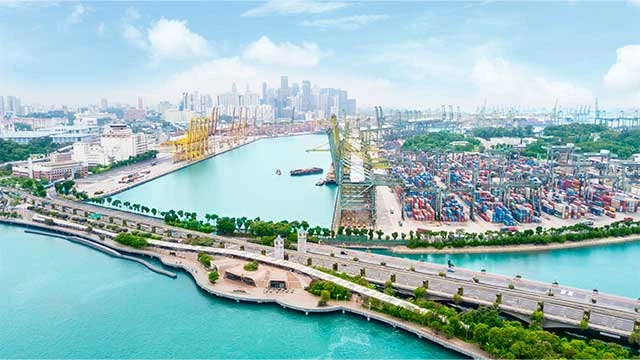
- Blank Sailings and Capacity Adjustments: Carriers are canceling voyages to manage and balance capacities, tightening supply and increasing spot rates. The US-China tariff issues have disrupted demand on trans-pacific lanes, resulting in rerouting and lower volumes.
Impact on Freight Rates
- The Red Sea/Suez Canal issues force vessels to reroute via Cape of Good Hope, raising costs and transit times.
- On the straits of Hormuz, the tensions increase risk premiums and insurance surcharges for vessels transiting from the Middle East to Asia.
- These bottlenecks will mean higher freight rates (up to 10% to 20%), longer transit times, and operational unpredictability.
Outlook
- With the prolonged port congestion in some main ports, this will mean longer schedule delays, equipment shortages and higher spot rates will persist.
- Blank sailing will result in tighter capacities along with General Rate Increase (GRI). This will lead to hikes in spot rates.
- The trade policy shifts also affect volume fluctuations and carriers will be looking into rerouting to new regional lanes.
- Longer voyages, bypass fees, premium on insurance costs, etc, will be expected as a result of the Red Sea disruption and the Hormuz tensions.
- On the short term (next 6 months), spot rates may elevate by 10% to 20% and rates will be very much volatile depending on conflict escalation.
- Bertling and our clients are encouraged to closely monitor the developments in the US trade policy, Hormuz tensions, and other impending world events to maneuver potential challenges effectively in the shipping industry.
Ocean freight trends - North America
For the second year in a row, the Port of New York and New Jersey is claiming the title of the busiest U.S. container port in May. The East and West Coast pros have a running rivalry, but this year SoCal was hindered by the tariffs against Chinese imports which were far more severe than the Trump administration's plans for Europe. Data released from the Port of New York and New Jersey shows a total of 774,698 TEU in May.
US container imports declined sharply in May this year after several months of growth, falling by 9.7 per cent month on month (MoM) and 7.2 per cent year on year (YoY) to 2,177,453 twenty-foot equivalent units (TEUs)—the lowest monthly total since March 2024, according to Canada-based Descartes.
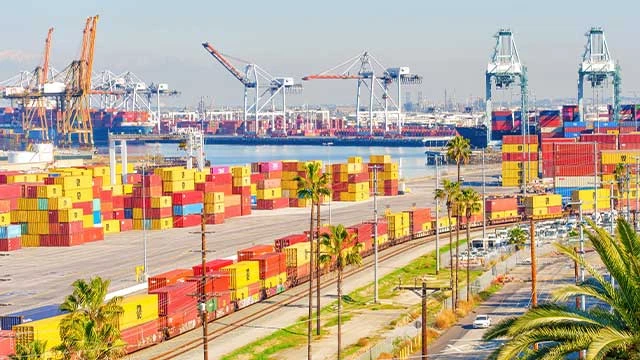
The drop followed a wave of frontloading in April and reflects a broader adjustment to shifting trade policies, including the expiration of the de minimis exemption and ongoing tariff volatility, the company offering cloud-based logistics and supply chain management solutions said in a release.
Main Reasons for Bottlenecks
- Tariff uncertainty due to steep, then temporarily reduced, U.S.-China tariffs.
- Surge in shipments causing port congestion in China and Europe.
- Additional proposed U.S. tariffs on ship cranes increase industry uncertainty.
Impact on Freight Rates
For the second consecutive week, Drewry's World Container Index fell 9% this week as of 26 June 2025, following five weeks of gains. This decline is a direct result of low demand for US-bound cargo and is a sign that the recent surge in imports to the US, which occurred after the temporary halt of higher US tariffs, will fail to have the lasting impact we initially expected. While freight rates from Shanghai to New York decreased 13% to USD 5,703 per 40ft container in the past week, spot rates are still up a significant 56% compared to seven weeks ago (8 May 2025). Similarly, spot rates to Los Angeles dropped 20% this past week, but gained 38% over the last seven weeks. (Drewry)
Market average on the Transpacific trade from Far East to US West Coast has fallen dramatically since the spike on 1 June 2025. Declining spot rates this week has all but evaporated the spike. This trade lane is the foremost impacted by the US-China trade war. Clearly, capacity is now more than meeting demand and the shippers who are realizing that are pushing back on ‘peak season surcharge’. Market average on the trade from Far East to US East Coast has fallen 9% since 1 June 2025 to USD 5,990 per FEU. The spot rate is holding up to a large extend into the US East Coast, standing 43% higher on 27 June 2025 than on 31 May 2025. (Xeneta)
Outlook
Despite the weaker economic outlook, cargo volumes during the first four months of the year have been strong and grown 5.1% year on year. Front-loading of cargo to the US to avoid the higher import tariffs threatened for later in the year has contributed to this growth. However, cargo volumes to four out of seven regions have grown even faster. For the rest of the year, we have lowered the North America import cargo volume growth forecast as we expect the second half of 2025 to be weaker due to the front-loading of cargo during the first half of the year. We now forecast an average annual growth rate for North American imports of 1.6% during 2025-2026, the lowest among all regions. (Bimco)
Ocean freight trends - South America
Hapag-Lloyd is updating the rotation of its South America Westcoast (SWX) service, removing Manzanillo (PA) and adjusting berth windows in Cartagena (CO) and Caucedo (DO). The first vessel with the updated rotation will be the 5215N/5225S.
The Brazilian Waterway Transportation Agency (Antaq) approved last Wednesday (06/25) the analyses of the contributions from Public Hearing 18/2024, which deals with the concession of the Paraguay River Waterway. The Waterway is the main route for the flow of cargo in the Central-West region of Brazil.
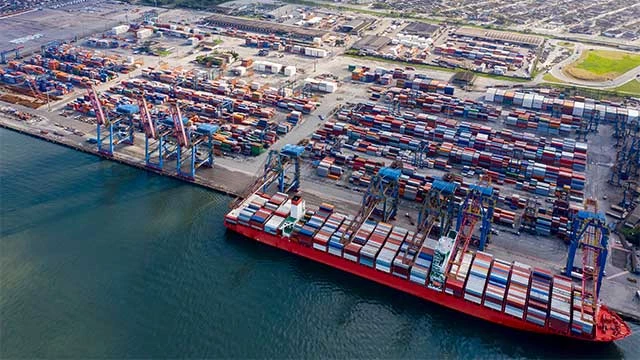
With concession, dredging, beacon and adequate signaling services will be carried out, in addition to investments in infrastructure such as industrial warehouses, traffic management systems and improvements in crossings. These improvements will ensure safety and reliability in navigation. Direct investment is estimated over 5 years of USD 11.6 million.
Main Reasons for Bottlenecks
- Reports indicate growing port congestion in Latin America and adjustments to global freight networks due to shifting demand and trade policy changes.
- Major South American ports like Santos (Brazil) and Buenos Aires (Argentina) are already experiencing congestion, and increased trade volumes are likely to exacerbate this issue. Expanding port capacity and improving cargo handling efficiency are crucial to alleviating congestion, but these upgrades take time and investment.
Impact on Freight Rates
- Happag Lloyd - inform an upcoming General Rate Increase (GRI) on services from Far East, Baseports to West Coast of South America and Mexico, effective 8 July 2025 until further notice.
| Current rates: | New rates: |
| 20' DRY: USD 2,100 | 20' DRY: USD 2,600 |
| 40' DRY: USD 2,400 | 40' DRY: USD 3,400 |
| 40' NOR: USD 2,100 | 40' NOR: USD 3,100 |
- This adjustment reflects an increase of USD 500 per TEU and is applicable to our entire Far East to South America West Coast, and Mexico West Coast (base ports and outports).
Outlook
The strengthening of trade relations between South American countries, driven by trade agreements such as the current Mercosur x Europe agenda, can increase the volume of cargo moved within the region, positively affecting the shipping market.
Ocean freight trends - Middle East
- Rate erosion continues.
- Space and Equipment availability improved.
- +520 Days after Red Sea Crisis has started and no sight of normalcy with shipping through Red Sea.
- Jebel Ali congestion easing slightly.
Main Reasons for Bottlenecks
- Carriers are implementing blank sailings and adjusting schedules to manage reduced demand and mitigate risks associated with the Red Sea route.
- Dammam experiencing 3-day delays. Cargo meant for Jeddah redirected via Dammam.
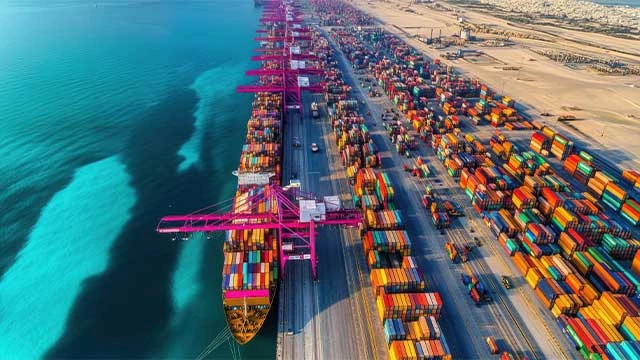
Impact on Freight Rates
- Freight rates from China to the Middle East have decreased by approximately USD 100 – USD 200 per 40-foot high-cube container (40HC) in recent months. For instance, rates to Jebel Ali, range between USD 1,300 and USD 1,650 per 40HC.
- Carriers have started restricting booking from Middle east into South East Asia in an attempt to reduce the number of containers flooding into Transhipment ports in that area.
Outlook
- Overall downward rate slide to continue.
- Expect carriers to increase port omissions to consolidate cargo and push rates upwards.
Ocean freight trends - South Africa
- An average of ~12,588 TEUs was handled per day, with ~12,275 TEUs projected for next week.
- Rail cargo handled out of Durban was reported at 1,641 containers, down by ↓53% from last week.
- Cross-border queue: no change; transit: ↓0.1 hrs; SA borders: 9.3 hrs (↑11%); SADC: 4.7 hrs (no change).
- Global container throughput outlook revised down with four-quarter average rate moderating to ↑5,8%.
- Global spot rates increased by ↑0.5% (16 USD) to 3,543 USD/40ft; charter rates is at 74,000 USD/day for 8,500 TEUs.
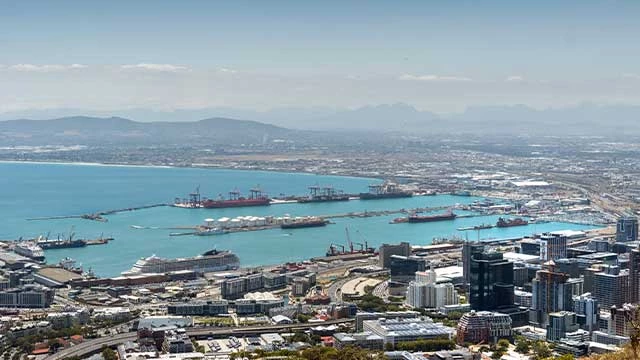
Main Reasons for Bottlenecks
- Port of Cape Town and Durban: Operations disrupted by continuous equipment breakdowns and vacant berths; Durban additionally affected by adverse weather.
- Eastern Cape Ports and Port of Richards Bay: Inclement weather, vessel ranging, and vacant berths disrupted Eastern Cape ports; Richards Bay primarily affected by poor weather.
- Rail disruptions: Cable theft on the Capital Park line near Pretoria and fallen trees between Durban and Mooi River (due to adverse weather) impacted rail operations.
- Vessel schedule changes: Planned Maersk swap (Cubango 521E and Hedwig Schulte 522E) cancelled; Fleur N omitting Coega due to congestion and delays in West Africa.
- Land border delays:SA border crossing times rose to ~9.3 hrs (↑11%) with major delays at Beitbridge and Kasumbalesa; contributing factors included ZRA downtime, Zimbabwe inspections, and a DRC copper theft alert. Rail to Maputo remained stable (~9 trains/day), while sugar trains from Eswatini slightly decreased (~1 train/day).
Impact on Freight Rates
- Container rates remained relatively stable this week, with Drewry’s World Container Index increasing by 0.5% (16 USD) to 3,543 USD per 40-ft container
- The recent surge in rates was driven by the resumption of US-bound traffic after President Trump’s pause on import tariffs, following a collapse in Transpacific volumes
- Charter markets continued to rise, with the Harpex Index reaching 2,158 points (up 1.6%), translating to around 74,000 USD per day for 8,500 TEU vessels
- The rate surge was mainly driven by larger vessels, while rates for smaller vessels remained stable
Outlook
- Transnet’s three-year wage agreement brings much-needed labour stability, supporting operational and strategic continuity.
- Bulk cargo volumes continue their positive trajectory, with year-to-date growth of 6.4%.
- The containerised sector remains 4.1% below last year and 4.9% below 2019 levels, and is not yet exhibiting the growth required to underpin a broad-based recovery in the national logistics system.
- The Merchant Shipping Bill has been brought to Nedlac for consultation, presenting an opportunity to strengthen South Africa’s maritime sector through improved regulations.
Customer advice
Considering the ever-changing market conditions and forces, please:
- Let's closely monitor the developments in the US trade policy and the impending world events to maneuver potential challenges effectively in the logistics industry.
- Think ahead and book well in advance. Try to plan for 6 months ++.
- Consider that the market can change significantly. Further disruptions can happen anytime.
- Identify contract options that enable flexibility and resilience for your business.
- Plan 3–4 weeks in advance for all Asia-related cargo.
- Consider alternative European gateways or routings where feasible.
- Maintain flexible delivery schedules to absorb delays.
- Stay engaged for tactical rate and space guidance.
However, it is our job at Bertling to keep global supply moving and do all we can and apply our knowledge, network and expertise to protect our clients’ while taking the latest market developments into account. We are there to find the best solutions to ensure cargo flows.



